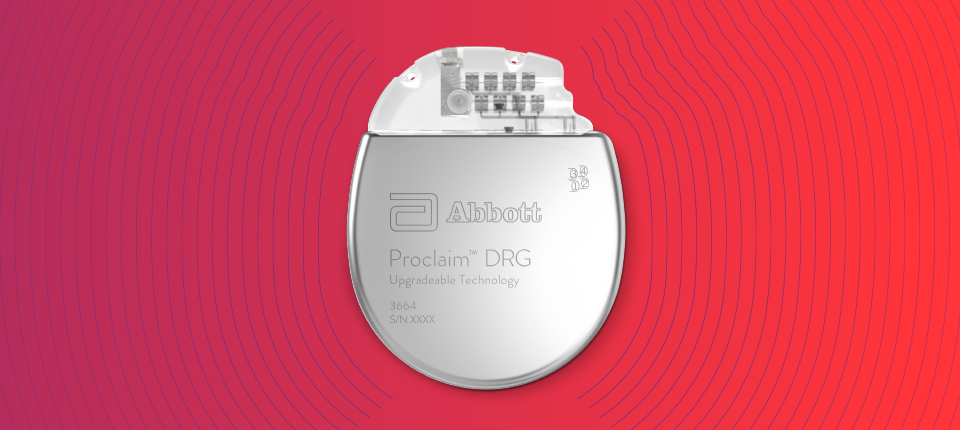Important Safety Information
PROCLAIM DRG NEUROSTIMULATOR SYSTEM
While DRG therapy has been proven successful in many patients, it may not be right for everyone. Talk to your doctor to see if the Proclaim™ DRG Neurostimulator System may help you manage your pain.
RX ONLY
Brief Summary:
Prior to using these devices, please review the User’s Guide for a complete listing of indications, contraindications, warnings, precautions, potential adverse events, and directions for use. The system is intended to be used with leads and associated extensions that are compatible with the system.
Indications for Use:
US: Spinal column stimulation via epidural and intra-spinal lead access to the dorsal root ganglion as an aid in the management of moderate to severe chronic intractable* pain of the lower limbs in adult patients with Complex Regional Pain Syndrome (CRPS) types I and II.**
*Study subjects from the ACCURATE clinical study had failed to achieve adequate pain relief from at least 2 prior pharmacologic treatments from at least 2 different drug classes and continued their pharmacologic therapy during the clinical study.
**Please note that in 1994, a consensus group of pain medicine experts gathered by the International Association for the Study of Pain (IASP) reviewed diagnostic criteria and agreed to rename reflex sympathetic dystrophy (RSD) and causalgia, as complex regional pain syndrome (CRPS) types I and II, respectively.
International: Management of chronic intractable pain.
Contraindications:
US: Patients who are unable to operate the system, who are poor surgical risks, or who have failed to receive effective pain relief during trial stimulation.
International: Patients who are unable to operate the system, are poor surgical risks, are pregnant, or under the age of 18.
Warnings/Precautions: Diathermy therapy, implanted cardiac systems or other active implantable devices, magnetic resonance imaging (MRI), computed tomography (CT), electrosurgery devices, ultrasonic scanning equipment, therapeutic radiation, explosive or flammable gases, theft detectors and metal screening devices, lead movement, operation of machinery and equipment, pediatric use, pregnancy, and case damage.
Adverse Effects: Painful stimulation, loss of pain relief, surgical risks (e.g., paralysis). User's Guide must be reviewed for detailed disclosure.
Related articles
-
A fuller life with DRG therapy
Live a life that fits you, not your chronic pain. Here's where to start.
-
Tony's Journey with Chronic Pain Therapy
This chef tried everything — even amputation — before discovering the DRG stimulator technology that helped him manage his chronic pain.



